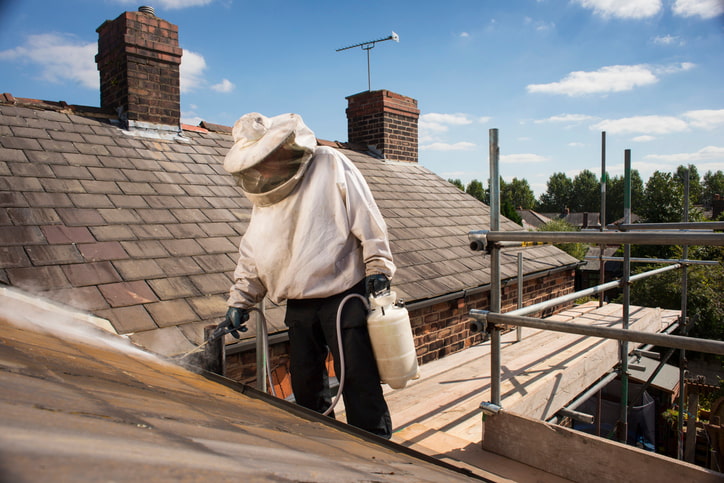As the weather warms and spring flowers bloom, bees, hornets, and wasps become more active. These busy little critters are critical to the pollination of crops and prey on pesky bugs. However, they can be edgy and territorial, creating conflict with humans. Learn how to safely coexist with these vital insects without getting stung. Following are tips for avoiding the sting.
Reduce the Threat
The majority of wasps, hornets, and bees are relatively harmless to humans. They generally attack only if threatened. Refrain from hurried movement, swatting, and/or killing them as they buzz by.
Put Food Away
Sweet and/or rotting scents attract hornets, bees, and wasps. Ensure you cover all drinks and food in your yard. If you leave windows and doors open, cover food and drinks in the house as well.
Avoid Brightly Coloured Clothing
As wasps and bees are attracted to bright hues, opt for a solid white shirt instead of brightly coloured clothing when spending time outdoors.
Steer Clear
To avoid threatening stinging creatures, stay away from their nests and hives.
Seal Your Garbage Cans
Tight-fitting lids keep hornets and wasps from rotting food and the sticky sweetness of your garbage.
Strategic Planting
To manage stinging insects, plant cucumbers, marigolds, geranium, eucalyptus, mint, wormwood, pitcher plants, pennyroyal, spearmint, thyme, and/or lemongrass around your yard. This vegetation discourages visits from hornets, wasps, and bees.
Utilize Natural Compounds
Try sprinkling garlic powder and/or cinnamon around the exterior of your home, deck, and patio. These natural compounds can be a helpful deterrent.
What to do if You’re Attacked
All the precautions in the world can’t ensure you won’t have an uncomfortable encounter with a wasp, hornet, or bee. What should you do if you are feeling threatened or attacked?
- Move slowly away: If you inadvertently rile hornets, wasps, and/or bees, move slowly away from the area. Put 50 meters between you and the nest or hive. Refrain from running as it enhances the agitation. Don’t return until the insects have had time to settle.
- Refrain from swatting or flailing: Sudden movements enhance the agitation of insects. Stay calm and refrain from flailing your arms or swatting at the bugs.
- Take cover: Try to put barriers between you and the hive/nest. Calmly walk toward thick vegetation, enter a vehicle, or go indoors.
Call a Professional
If navigating the world of hornets, wasps, and bees seems overwhelming and/or you have an infestation that you cannot find a way to coexist with, call a pest control expert. They have the knowledge and skills to ensure a pest-free environment.
To coexist with hornets, wasps, and bees may seem tricky. Understanding how these stinging insects behave, undertaking preventative actions, and using plants and natural compounds help humans live in harmony with them. Have a safe summer in your backyard. Take the time to learn about and prepare for the presence of stinging insects.
Do you have a bee, wasp, and/or hornet infestation in your yard? Not sure how to handle or coexist with these stinging insects? Contact One Man and a Ladybug. We’re happy to identify and help you remove any infestation. Your safety is our priority.



